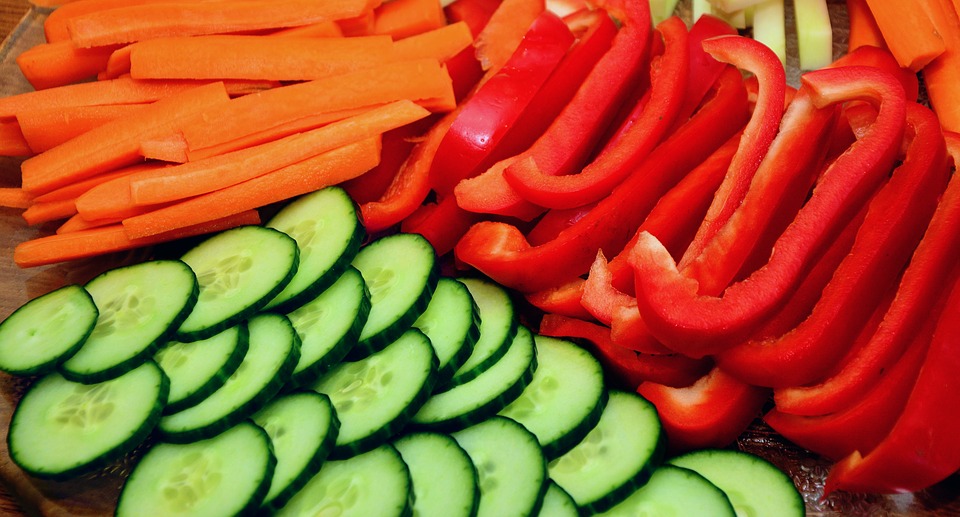By Mary Pletsch 06 Mar 2018 no comment 1279 Views
When it comes to creating a healthy and nutrient dense meal, one of the best things to do is to eat as many different colours as possible. Colour can help you to build a healthy diet!
Adding colour to a meal makes your plate more appealing. But it can also help to ensure that you and your family are eating a variety of essential vitamins and minerals. The color of certain fruits and vegetables can tell you a lot about what nutrients they may contain. Listed below are some of the most common colors of fruits and vegetables. We’ve also listed the nutrients that are commonly found in these foods. So go ahead and taste the rainbow, literally!
Taste a rainbow of colour
Red fruits and vegetables such as tomatoes and grapefruit contain lycopene. Lycopene helps to protect the body from oxidative stress[1], leading to a reduced risk of cardiovascular disease. Recent research has said that lycopene in dietary form may reduce the chances of certain cancers such as prostate cancer.
Orange/Yellow fruits and vegetables such as carrots and sweet potatoes contain carotenoids, like beta-carotene. Beta-carotene is converted to vitamin A in the body. Vitamin A can protect the eyes from damage and night blindness. As well, Vitamin A aids in the maintenance of healthy skin, teeth and mucous membranes. Citrus fruits contain a lot of vitamin C. Vitamin C can help to reduce the duration and severity of illnesses such as the common cold, by maintaining the immune system.
Green fruits and vegetables, such as green peas and asparagus, contain lutein. Lutein can help to prevent oxidative stress on the body. Green produce is also a good source of nutrients like iron, calcium, folate and B vitamins. These nutrients all are important for bone health as well as proper development during pregnancy and infancy.
Blue/Purple fruits and vegetables, such as blackberries and beets, contain anthocyanins. They act as powerful antioxidants[2], protecting the brain from oxidation. Research has shown that anthocyanins may contribute to better memory function and improved mental state during elderly years. Also, they decrease levels of LDL cholesterol, which helps prevent heart disease.
White fruits and vegetables, such as onions, garlic and mushrooms contain anthoxanthins. Anthoxanthins may help to lower both blood pressure and cholesterol levels. Other white foods, such as bananas and baked potatoes are rich in potassium. Potassium is an electrolyte and is critical for fluid balance within the body.
Footnotes
[1] – Oxidative Stress: A persistent imbalance between antioxidants and pro-oxidants in favor of the latter, often resulting in irreversible cellular damage.
[2] – Antioxidant: A chemical compound or substance that inhibits oxidation (required for several body metabolic processes).

